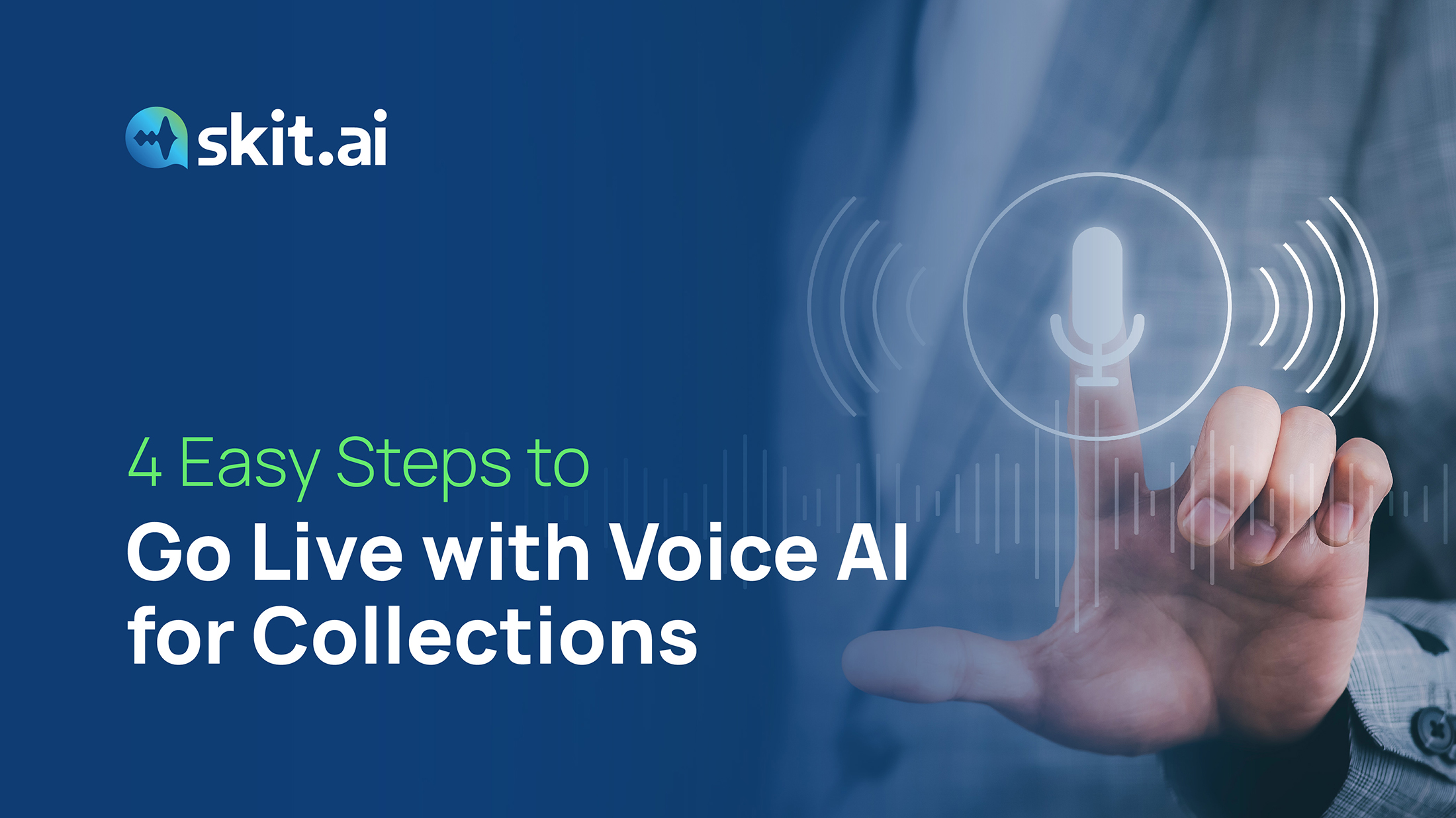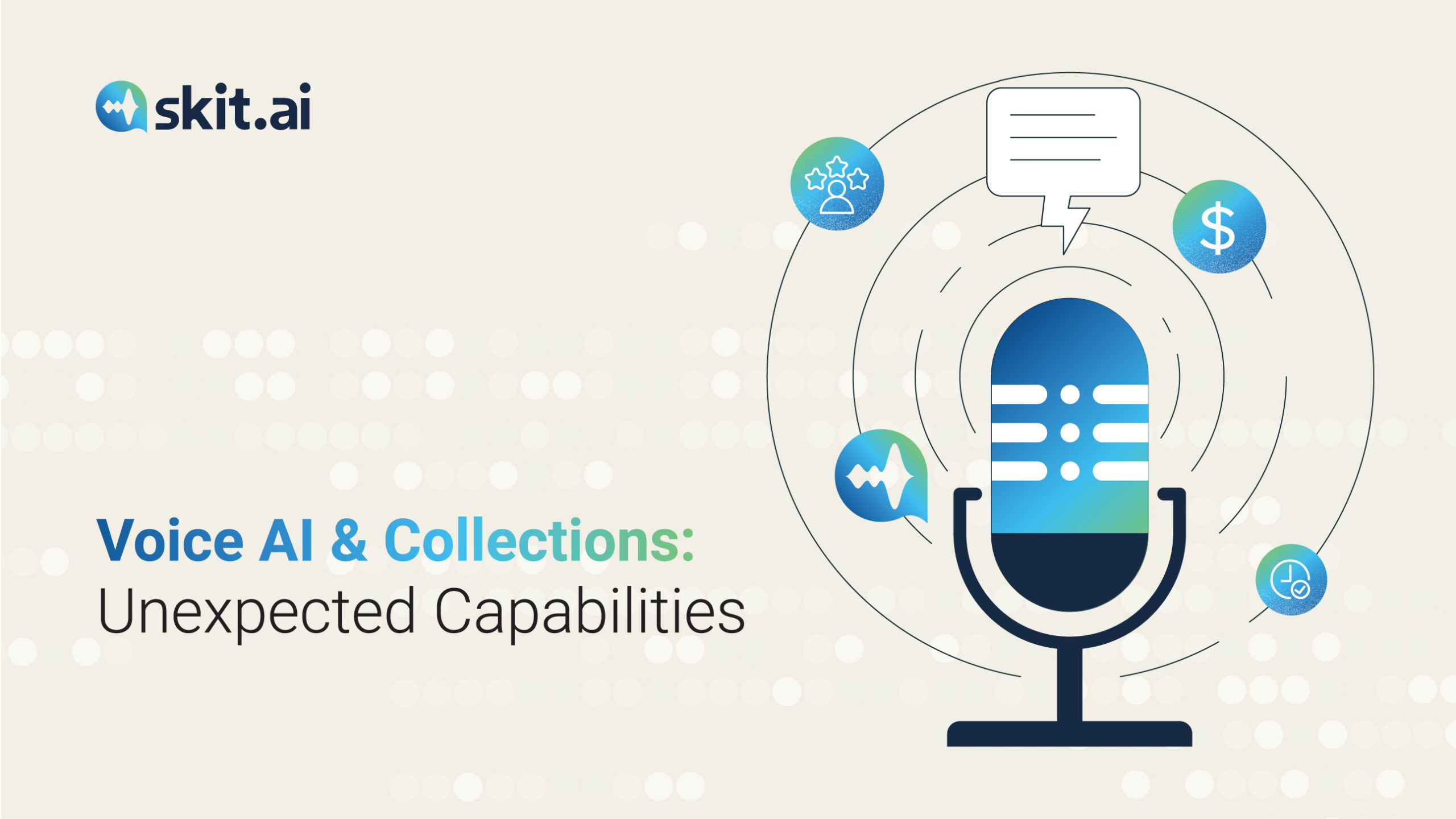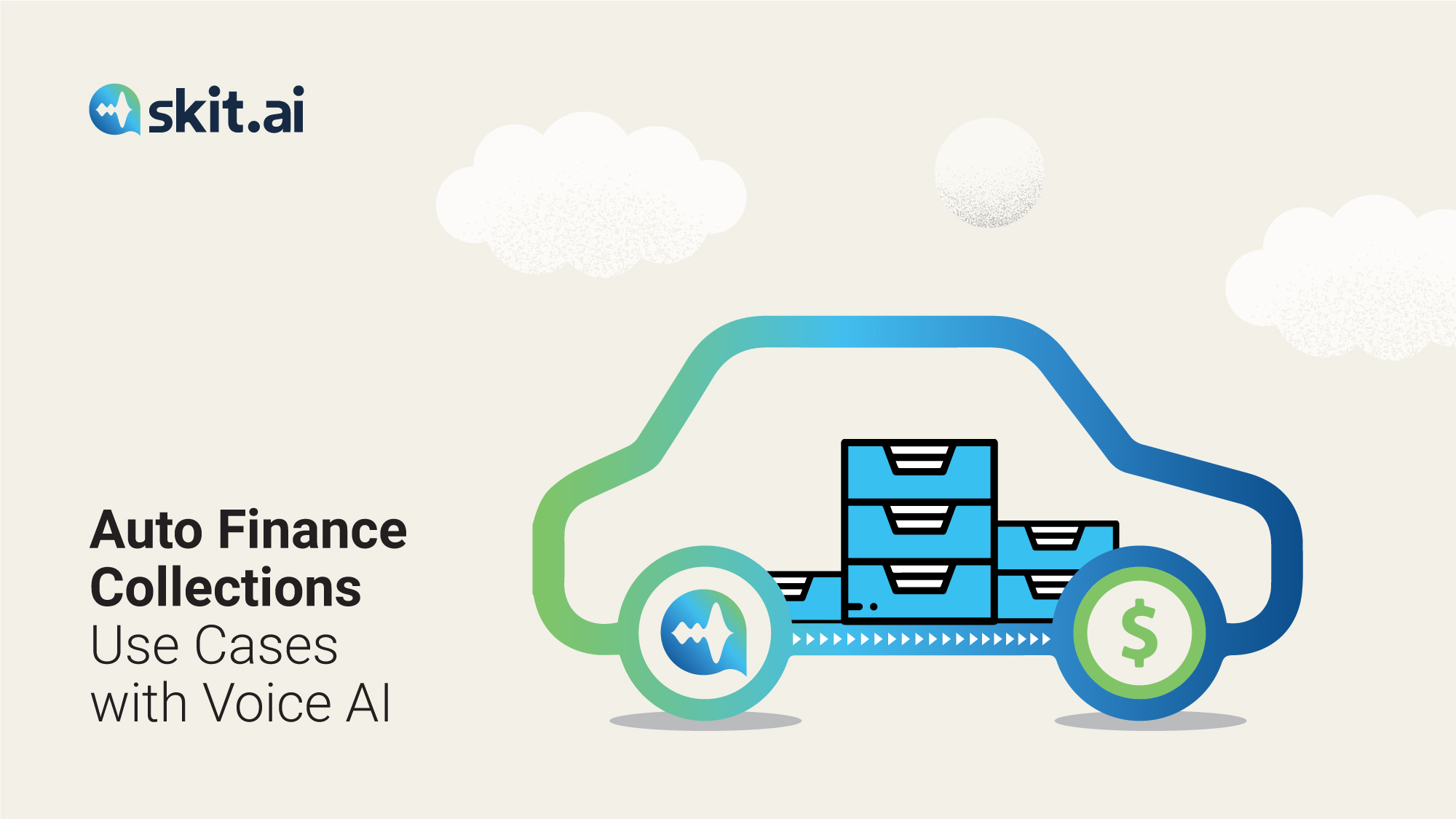Table of Contents
What is Conversational AI?
Conversational AI is a subset of artificial intelligence (AI) designed to enable machines to understand, process, and respond to human language in a natural and conversational manner. This technology comprises various AI components, such as natural language processing (NLP), machine learning, and speech recognition, to facilitate human-machine interactions that mimic human-human conversations. Conversational AI systems can interpret and generate human language, making them capable of engaging in meaningful dialogue with users in many industries.
The importance of conversational AI in modern technology cannot be overstated. It has revolutionized how businesses interact with their customers, providing instant, personalized responses that enhance customer experience. Conversational AI is widely used in customer service, where chatbots and virtual assistants handle inquiries, resolve issues, and provide information around the clock. Additionally, it plays a significant role in personal assistants like Siri, Alexa, and Google Assistant, which help users manage their daily tasks, control smart home devices, and access information through voice commands. Integrating conversational AI in various applications has streamlined operations, increased efficiency, and provided users with a more intuitive and interactive way to engage with technology.
Evolution of Conversational AI
The evolution of conversational AI is a fascinating journey that spans several decades, marked by significant milestones and technological advancements.
Early Attempts at Creating Conversational Agents
The roots of conversational AI can be traced back to the 1960s with the development of ELIZA, one of the earliest attempts at creating a conversational agent. Developed by Joseph Weizenbaum, ELIZA was a computer program designed to simulate conversation by using pattern matching and substitution methodologies. ELIZA’s most famous script, “DOCTOR,” mimicked a Rogerian psychotherapist, responding to user inputs with open-ended questions. Although limited in its capabilities, ELIZA demonstrated the potential of computers to engage in human-like conversations.
Milestones in AI Development
The 1970s and 1980s saw further advancements in the development of more sophisticated natural language processing systems. In 1995, ALICE (Artificial Linguistic Internet Computer Entity) was introduced, which utilized heuristic pattern matching to engage in more realistic conversations. However, IBM Watson’s victory on the quiz show Jeopardy! in 2011 marked a significant milestone in AI development. Watson’s ability to understand and respond to complex questions in natural language showcased the immense potential of conversational AI.
Key Technologies that Paved the Way
Several key technologies have paved the way for the development of conversational AI. NLP, which enables machines to understand and generate human language, has been fundamental. Machine learning and deep learning algorithms have allowed conversational AI systems to improve their performance over time by learning from vast amounts of data. Additionally, advancements in speech recognition and synthesis have enabled the development of voice-based conversational AI systems that can understand spoken language and generate human-like speech.
Core Technologies of Conversational AI
The core technologies of conversational AI include natural language processing (NLP), machine learning, deep learning, and speech recognition and synthesis. These technologies work together to enable conversational AI systems to understand, process, and respond to human language.
Natural Language Processing (NLP)
NLP is a branch of AI that focuses on the interaction between computers and humans through natural language. It involves the application of computational techniques to analyze and synthesize natural language and speech. NLP is crucial for conversational AI as it allows machines to understand and generate human language in a way that is both meaningful and contextually appropriate.
How does it work?
NLP involves several steps, including text preprocessing, syntactic analysis, semantic analysis, and pragmatic analysis. Text preprocessing involves cleaning and preparing the text for analysis by removing stop words, stemming, and tokenization. Syntactic analysis, or parsing, involves analyzing the grammatical structure of a sentence to understand its syntax. Semantic analysis involves understanding the meaning of the words and phrases in a sentence. Pragmatic analysis involves understanding the context and intent behind the words.
Key Components of NLP
- Syntax: Syntax is the arrangement of words and phrases to create well-formed sentences. Syntactic analysis, or parsing, involves analyzing the grammatical structure of a sentence to understand its syntax. It helps conversational AI systems understand the rules of language and how words are related.
- Semantics: Semantics refers to the meaning of words and sentences. Semantic analysis involves understanding the meaning of the words and phrases in a sentence. It helps conversational AI systems understand the content of the conversation and the relationships between words.
- Pragmatics: Pragmatics refers to the study of how context influences the interpretation of meaning. Pragmatic analysis involves understanding the context and intent behind the words. It helps conversational AI systems understand the nuances of human language and respond appropriately based on the context of the conversation.
Machine Learning and Deep Learning
Machine learning and deep learning are critical components of conversational AI. They enable systems to learn from data and improve their performance over time.
Role in Training Conversational AI
Machine learning involves training algorithms on large datasets to recognize patterns and make predictions. In the context of C onversational AI, machine learning is used to train models to understand and generate human language. Deep learning, a subset of machine learning, involves training neural networks with multiple layers to recognize complex patterns in data. Deep learning has been particularly successful in improving the performance of conversational AI systems by enabling them to understand and generate more natural and coherent language.
Types of Algorithms Used
- Supervised Learning: Supervised learning involves training models on labeled data, where the input data is paired with the correct output. This approach is used for tasks such as text classification and sentiment analysis in conversational AI.
- Unsupervised Learning: Unsupervised learning involves training models on unlabeled data where the input data does not have corresponding output labels. This approach is used for tasks such as clustering and topic modeling in conversational AI.
- Reinforcement Learning: Reinforcement learning involves training models through a system of rewards and punishments based on their actions. This approach optimizes conversational strategies and improves the performance of conversational AI systems over time.
Speech Recognition and Synthesis
Speech recognition and synthesis technologies are essential for voice-based conversational AI systems, enabling them to understand spoken language and generate human-like speech.
How Speech Recognition Works
Speech recognition involves converting spoken language into text. This process typically involves several steps, including audio signal processing, feature extraction, and pattern recognition. Audio signal processing involves capturing and digitizing the spoken language. Feature extraction involves identifying and extracting relevant features from the audio signal, such as phonemes and prosody. Pattern recognition involves matching the extracted features to known patterns in a database to generate the corresponding text.
Text-to-Speech Technology
Text-to-speech (TTS) technology involves converting text into spoken language. This process typically involves several steps, including text analysis, phonetic analysis, and speech synthesis. Text analysis involves analyzing the text to determine its structure and meaning. Phonetic analysis involves converting the text into phonetic representations, such as phonemes and intonation. Speech synthesis involves generating the corresponding audio signal based on the phonetic representations. Modern TTS systems use deep learning techniques to generate more natural and human-like speech.
Components of Conversational AI
Conversational AI is an advanced technology that enables machines to interact with humans in a natural and meaningful way. It consists of several components, including chatbots, Voice AI, and virtual assistants. Each plays a crucial role in the broader scope of conversational AI, enabling various applications and enhancing user experiences.
Chatbots
Conversational AI chatbots are computer programs designed to simulate human conversation. There are two main types: rule-based and AI-based chatbots.
- Rule-based Chatbots: These chatbots operate on predefined rules and patterns. They are programmed with a set of if-then-else statements and can handle specific queries within a limited scope. Rule-based chatbots are straightforward and efficient for simple tasks but struggle with complex or unpredictable interactions.
- Conversational AI Chatbots: Unlike rule-based chatbots, Conversational AI chatbots leverage machine learning and natural language processing (NLP) to understand and respond to user inputs. They can learn from interactions, handle more complex queries, and provide more accurate and personalized responses over time.
Chatbots are widely used across various industries to enhance customer service, streamline operations, and improve user engagement.
- Customer Support: Many companies use chatbots to provide instant customer support, handling common queries, troubleshooting issues, and guiding users through processes. For example, banking institutions use chatbots to assist customers with account inquiries, transactions, and loan applications.
- E-commerce: E-commerce platforms deploy chatbots to assist shoppers, recommend products, track orders, and manage returns. An example is H&M’s chatbot, which helps users find clothing items based on their preferences.
- Healthcare: In the healthcare sector, chatbots are used to schedule appointments, provide medical information, and offer initial diagnostics. For instance, Babylon Health’s chatbot uses AI to evaluate symptoms and suggest potential treatments.
Voice AI
Voice AI refers to technologies that enable machines to understand and generate human speech. The importance of voice in conversational AI lies in its ability to provide a more natural and intuitive way for users to interact with technology. Voice interactions are faster and more convenient than typing, making them ideal for hands-free situations and enhancing accessibility for users with disabilities.
Advancements in voice technology have significantly improved the accuracy and efficiency of Voice AI systems.
- Speech Recognition: Modern speech recognition systems, powered by deep learning algorithms, can accurately transcribe spoken language into text, even in noisy environments. Technologies like Google’s Speech-to-Text API and Apple’s Siri have set high standards for accuracy and reliability.
- Text-to-Speech (TTS): TTS technology has evolved to produce more natural and human-like speech. Advanced TTS systems, such as Amazon Polly and Google’s WaveNet, use neural networks to generate high-quality, expressive speech, enhancing user experiences in applications like virtual assistants and audiobooks.
Virtual Assistants
Virtual assistants are specialized conversational AI designed to perform a wide range of tasks based on voice or text commands. Unlike traditional chatbots and voicebots, which typically focus on specific tasks or domains, virtual assistants are more versatile and capable of seamlessly managing multiple functions.
- Integration: Virtual assistants integrate with various services and applications, allowing users to perform tasks like setting reminders, sending messages, controlling smart home devices, and accessing information from different sources.
- Personalization: Virtual assistants leverage user data and machine learning to provide personalized experiences, tailoring responses and recommendations based on individual preferences and behaviors.
Several popular virtual assistants have become integral parts of everyday life, demonstrating the capabilities and versatility of conversational AI. These assistants include Siri, Alexa, and Google Assistant.
Applications of Conversational AI
Conversational AI is revolutionizing how businesses and industries interact with their customers and streamline operations. Conversational AI provides efficient, personalized, and scalable solutions across various applications by leveraging natural language processing (NLP), machine learning, and speech recognition.
Healthcare
Conversational AI has transformative potential in healthcare, enhancing patient care and administrative efficiency.
-
- Patient Triage: AI chatbots can ask preliminary questions to assess patients’ conditions and direct them to the appropriate care level.
- Appointment Management: Conversational AI schedules appointments, sends reminders, and handles cancellations or rescheduling.
- Health Information: AI-driven platforms provide patients with accurate information about symptoms, treatments, and medications.
- Insurance claims and self pay dues:
Example: Babylon Health uses AI to provide remote consultations and medical advice based on user input.
Finance
The finance industry leverages conversational AI to enhance customer service, streamline operations, and improve user experiences.
- Customer Support: AI chatbots handle routine inquiries about account balances, transaction histories, and payment due dates.
- Fraud Detection: Conversational AI monitors transactions and flags suspicious activities, helping prevent fraud.
- Financial Advice: AI-driven platforms provide personalized financial advice based on users’ financial goals and behaviors.
Example: Bank of America’s Erica offers insights into spending habits, helps manage bills, and provides budgeting advice.
Insurance
Conversational AI enhances the insurance industry by improving customer interactions and streamlining claims processes.
- Claims Processing: AI chatbots guide users through the claims process, collect necessary information, and provide status updates.
- Policy Information: Conversational AI answers inquiries about coverage, policy terms, and premium payments.
- Customer Support: AI handles routine inquiries, freeing up human agents to focus on more complex issues.
Example: Insurance companies use AI to streamline claims processing and improve customer service efficiency.
Debt Collections
The debt collections industry utilizes conversational AI to enhance communication with debtors, streamline collection processes, and improve recovery rates.
- Automated Outreach: AI-driven platforms can initiate contact with debtors via text messages, emails, and phone calls, providing reminders and payment options.
- Payment Arrangements: Conversational AI can negotiate payment plans, set up installments, and provide information on outstanding balances.
- Compliance: AI ensures communication is compliant with regulations, reducing the risk of legal issues and ensuring ethical practices.
Example: Debt collection agencies use AI chatbots to manage debtor communication, offer flexible payment options, and increase collection efficiency.
Retail and E-commerce
Conversational AI enhances the retail and e-commerce experience by providing personalized shopping experiences and improving customer service.
- Product Recommendations: AI-driven chatbots recommend products based on user preferences and browsing history.
- Order Tracking: Customers can inquire about their order status and receive real-time updates through conversational AI.
- Customer Support: AI handles inquiries about product availability, returns, and exchanges.
Example: Sephora uses AI chatbots to provide personalized makeup recommendations and answer beauty-related questions.
Travel and Hospitality
Conversational AI streamlines travel planning and enhances the guest experience in the hospitality industry.
- Booking Assistance: AI chatbots help users find flights, hotels, and rental cars, and complete bookings.
- Customer Service: AI handles inquiries about reservations, cancellations, and itinerary changes.
- Personalized Recommendations: Conversational AI provides tailored recommendations for dining, activities, and attractions based on user preferences.
Example: KLM Royal Dutch Airlines uses AI chatbots to assist customers with flight bookings, check-in, and travel updates.
Education
In the education sector, conversational AI enhances learning experiences and administrative processes.
- Tutoring: AI-driven platforms provide personalized tutoring, helping students understand complex concepts and complete assignments.
- Administrative Support: AI chatbots handle inquiries about enrollment, course schedules, and academic policies.
- Language Learning: Conversational AI facilitates language learning by engaging users in interactive dialogues and providing feedback.
Example: Duolingo uses AI to provide personalized language learning experiences and instant feedback on exercises.
Human Resources
Conversational AI optimizes human resources (HR) functions, improving efficiency and employee engagement.
- Recruitment: AI chatbots screen candidates, schedule interviews, and answer applicant questions.
- Employee Support: Conversational AI provides employees with information about benefits, policies, and procedures.
- Performance Management: AI-driven platforms assist with performance reviews, goal setting, and feedback collection.
Example: Companies use AI to streamline the recruitment process, reduce administrative tasks, and enhance employee satisfaction.
Telecommunications
The telecommunications industry benefits from conversational AI by improving customer service and operational efficiency.
- Customer Support: AI chatbots handle inquiries about service plans, billing, and technical issues.
- Technical Support: Conversational AI assists customers with troubleshooting and resolving technical problems.
- Service Upgrades: AI-driven platforms recommend service upgrades and new features based on user needs and behaviors.
Example: Telecom companies use AI chatbots to provide instant support and reduce call center workloads.
Upcoming trends in Conversational AI
Conversational AI continues to evolve at a rapid pace, driven by advancements in machine learning, natural language processing (NLP), and computational power. Emerging technologies, particularly large language models (LLMs) like GPT-4 and transformers, are setting new benchmarks for what conversational AI can achieve. This article explores the upcoming trends in conversational AI, including the impact of emerging technologies, the increasing role of LLMs in various use cases, and predicted improvements in the field.
Emerging Technologies in Conversational AI: GPT-4 and Beyond
GPT-4, developed by OpenAI, represents a significant leap in language models’ capabilities. Building on its predecessors, it offers improved language understanding, generation, and contextual awareness. It can generate human-like text, perform complex reasoning, and provide more accurate and contextually relevant responses.
- Enhanced Language Understanding: GPT-4’s ability to understand nuances in language makes it better at interpreting user intent and providing relevant responses.
- Improved Contextual Awareness: With a more extensive training dataset and more advanced algorithms, GPT-4 can maintain context over longer conversations, making interactions more coherent and natural.
- Multimodal Capabilities: GPT-4 can process and generate not just text but also images, expanding its application possibilities.
Increased Role of Large Language Models (LLMs)
Customer Support and Service
Large language models like GPT-4 are transforming customer support by providing more accurate and context-aware responses. They can handle complex queries, understand user sentiment, and provide personalized support.
- Automated Responses: LLMs can generate responses to frequently asked questions, reducing the workload on human agents.
- Sentiment Analysis: By analyzing the sentiment behind user queries, LLMs can prioritize urgent issues and tailor responses to improve customer satisfaction.
- Multilingual Support: LLMs can provide support in multiple languages, catering to a global customer base.
Example: A multinational company uses GPT-4 to provide customer support in various languages, ensuring consistent and high-quality service worldwide.
Content Creation and Personalization
LLMs are increasingly being used for content creation and personalization, helping businesses engage with their audience more effectively.
- Content Generation: LLMs can generate high-quality content for blogs, social media, and marketing materials, saving time and resources.
- Personalized Recommendations: By analyzing user behavior and preferences, LLMs can provide personalized recommendations for products, services, and content.
- Dynamic Content: LLMs can create dynamic content that adapts to user interactions, enhancing engagement and relevance.
Example: An e-commerce platform uses LLMs to generate personalized product descriptions and recommendations, improving user experience and conversion rates.
Healthcare and Telemedicine
In healthcare, LLMs are being used to provide medical information, support diagnosis, and enhance telemedicine services.
- Medical Information: LLMs can provide accurate and up-to-date medical information to patients and healthcare professionals.
- Diagnostic Support: By analyzing patient data, LLMs can assist in diagnosing medical conditions and suggesting treatment options.
- Virtual Consultations: LLMs can facilitate virtual consultations, providing patients with timely and accurate medical advice.
Example: A telemedicine app uses GPT-4 to provide patients with medical information and support virtual consultations, improving accessibility to healthcare services.
Education and E-Learning
LLMs are enhancing education and e-learning by providing personalized tutoring, creating educational content, and supporting language learning.
- Personalized Tutoring: LLMs can provide personalized tutoring based on individual student needs, helping them understand complex concepts and complete assignments.
- Content Creation: LLMs can generate educational content, such as lesson plans, quizzes, and interactive exercises.
- Language Learning: LLMs can facilitate language learning by engaging users in interactive dialogues and providing instant feedback.
Example: An e-learning platform uses LLMs to provide personalized tutoring and create educational content, improving learning outcomes for students.
Predicted Improvements in Conversational AI
Increased Accuracy and Reliability
As conversational AI technologies continue to evolve, we can expect significant improvements in the accuracy and reliability of these systems. Advanced models like GPT-4 and transformers will offer better language understanding, reducing errors and enhancing user experiences.
- Error Reduction: Improved algorithms and larger training datasets will help reduce errors in language understanding and generation.
- Contextual Awareness: Enhanced contextual awareness will allow conversational AI systems to maintain coherence over longer interactions, improving the naturalness of conversations.
Better Multimodal Capabilities
Future advancements in conversational AI will likely include better multimodal capabilities, enabling systems to process and generate text, images, and even videos.
- Integrated Experiences: Multimodal capabilities will enable more integrated and immersive user experiences, combining text, audio, and visual elements.
- Enhanced Understanding: The ability to process multiple types of data will enhance the AI’s understanding of complex queries and contexts.
Greater Personalization and Adaptability
Conversational AI systems will become more personalized and adaptable, offering tailored experiences based on individual user preferences and behaviors.
- Personalized Interactions: Advanced models will provide more personalized interactions, adapting responses based on user history and preferences.
- Adaptive Learning: AI systems will continuously learn from interactions, improving their performance and adaptability over time.
Ethical and Responsible AI Development
As conversational AI becomes more prevalent, there will be a greater focus on ethical and responsible AI development, ensuring that these systems are fair, transparent, and accountable.
- Bias Mitigation: Efforts will be made to identify and mitigate biases in AI models, ensuring fair and equitable treatment of all users.
- Transparency: Developers will focus on making AI systems more transparent, providing users with clear information about how decisions are made.
- Accountability: Mechanisms will be put in place to hold AI systems accountable for their actions, ensuring they operate within ethical guidelines.
Enhanced Security and Privacy
With the increasing use of conversational AI, ensuring the security and privacy of user data will be paramount.
- Data Encryption: Advanced encryption techniques will be used to protect user data during transmission and storage.
- Privacy-preserving AI: Techniques like differential privacy will be employed to ensure that user data is protected while still allowing AI models to learn and improve.
Skit.ai: A leader in Conversational AI for the Accounts Receivable Management Industry
At Skit.ai, we are dedicated to transforming accounts receivables and contact center operations across the globe. Founded in 2016, our mission is to revolutionize customer service interactions with our advanced Conversational AI technology, empowering organizations worldwide.
Recognizing the evolving landscape of customer interactions, we expanded our offerings to include a suite of multichannel AI solutions. This strategic expansion enables seamless, multilingual, and personalized interactions across voice, voicemail, chat, email, and text. Today, Skit.ai is a leader in Conversational AI, driving innovation and setting new standards for customer engagement. Our platform ensures that consumers, regardless of demographic differences, can engage with businesses through their preferred channels.
Our platform is preset with all applicable compliance filters at both federal and state levels, ensuring outreach times and frequencies are fully compliant. Skit.ai complies with TCPA, FDCPA, and Reg F, along with data security standards and certifications such as PCI DSS, SOC II, and HIPAA, guaranteeing data security and privacy.
Compliance-first Approach
- GenAI-powered Conversational AI: Our AI technology interacts seamlessly with customers, handling tasks from payment reminders to debt negotiations, ensuring natural and effective communication.
- Efficiency and Productivity: By automating repetitive tasks, Skit.ai enables human agents to focus on more complex, value-added activities, enhancing overall productivity and creating a more efficient and effective workforce.
- Scalable Solutions: Skit.ai offers scalable solutions tailored to businesses of all sizes. Our flexible AI technology can adapt and grow with your business, whether you have a small portfolio or extensive accounts.
- Bias Mitigation and Accuracy: We are committed to reducing biases and ensuring accurate decision-making within our AI models. Through rigorous training with diverse datasets and robust guardrails, we minimize the risk of biases, promoting fair and reliable outcomes.
- Customer Support and Success: We provide dedicated customer support and success teams to ensure smooth implementation and ongoing optimization of our AI solutions, maximizing the benefits for your business.
Skit.ai is not just a leader in Conversational AI; we are innovators committed to empowering businesses with advanced AI technologies. By simplifying consumer interactions and reaching users through their chosen communication channels, we help businesses achieve better results and improve their operations. As we continue to evolve, we remain dedicated to driving success for our clients and setting new standards in the industry.



